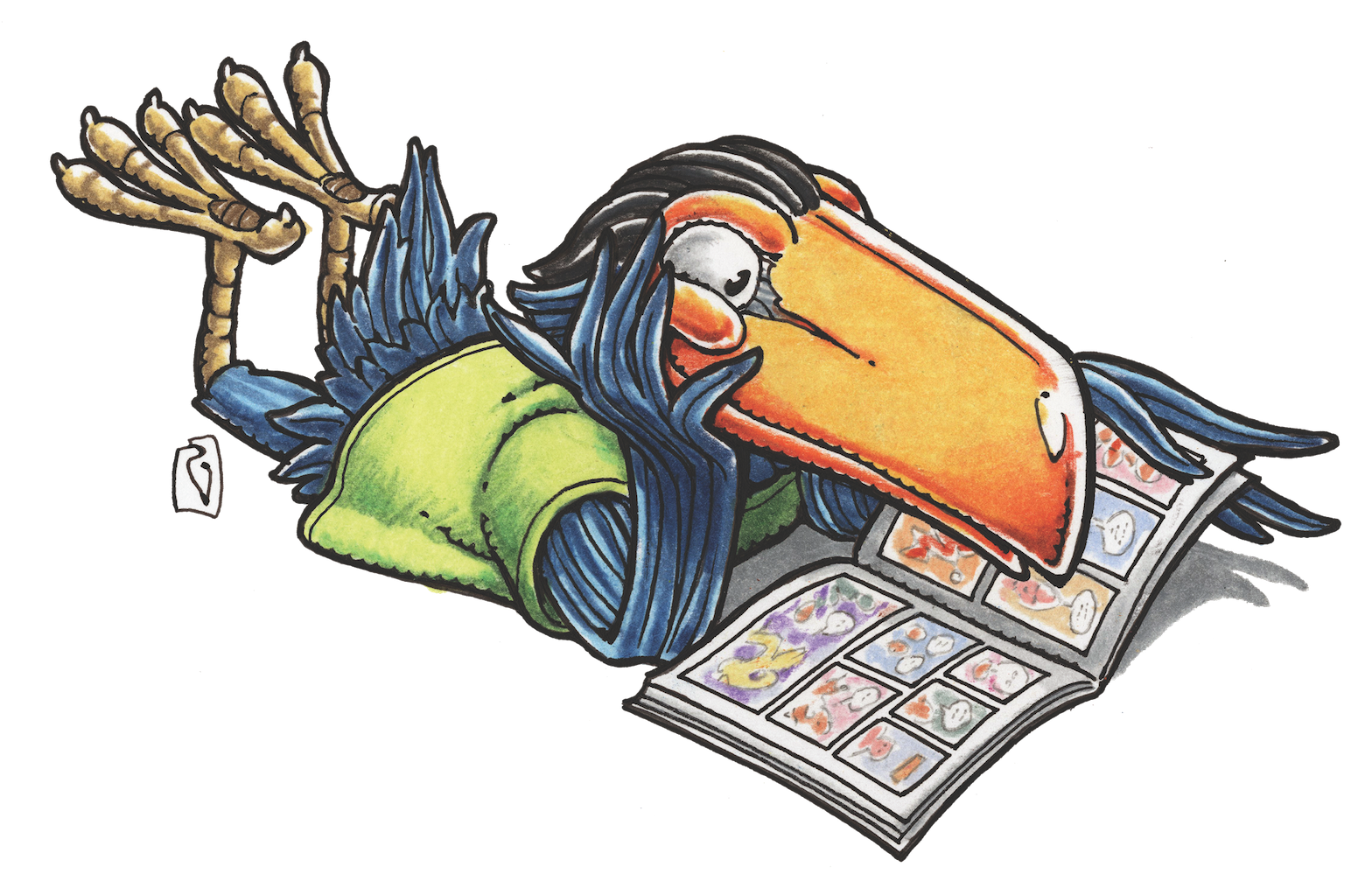HOW WRITERS BECOME COLLABORATORS!
Devourer of Words 004: The Collaborationist


So, let’s pretend you’ve landed that first gig. You hewed to the advice of the last column—pitching at a convention—and convinced a publisher to be the midwife for your sequential genius. Now you have to work with other people.
Comics are, like most forms of entertainment, a collaborative medium. So unless you’re the rare one-stop shop—writer/artist/colorist/letterer—you will need to learn how to play well with others to get the best finished product. And everyone will want something different from you.
The Editor
The editor will be the first and last person you speak to on any given issue of your comic. He or she might have even been the person to give you the green light in the first place. The tenor of your relationship will be based on two things: (1) whether the book is creator-owned or work-for-hire, and (2) the first phone conversation you have after the book is green-lit.
If you’re working on a creator-owned book, you have a decent amount of control. Not that you’re the last word—always remember that someone is paying for this, and he who mans the money spigot has the power. But it is your idea. You can pick up your toys and go home if you come across something you don’t like. It’s a big bomb to drop, but it’s in your arsenal.
If you’re working on a work-for-hire book—and you’re not already a Top Ten writer—you are disposable. Not that they’ll want to fire you—the path of least resistance is usually the path that a busy editor will follow—but if you’re not actively bringing a paying audience to the table, the publisher has no vested interest in keeping you around. So make that first phone call a good one.
That initial call—and I say call, because it’s entirely possible, if not likely, that you won’t be within driving distance of your editor—is like a first date. You make the small talk, you dance around the serious issues, but you generally get a sense of each other’s intentions. Most important, do you both want to make the same comic book? If you do, then great. If not, then you need to figure out a way to compromise that’ll make everyone happy.
As the process goes on, you’ll pitch that editor characters you want to introduce, longer arcs and shorter beats, themes you want to hit, and places you want to go. In a perfect world, you’ll get a great editor to work with. They’re a little hard to find these days, but they still exist. A great editor is someone who will work with you to make your story better. A great editor is not a writer. Or, at least, he or she shouldn’t want to be the writer of your story. The editor simply wants to get the best out of you and your work. Any notes he or she gives will be to that end and you should take them in that light.
If your editor is not of that stripe, all I can say is do your best to get along. Don’t be contentious, if you can avoid it. Be on your best behavior. If it gets so bad—if the person asks you to do things you’re uncomfortable with—you can always walk away, either taking your toys with you or leaving theirs behind.
But never raise your voice. Never email in anger. Conduct yourself like an officer: with respect and honor. If you don’t, it will bite you in the ass later on. You’ve been on Twitter. You know what I’m talking about.
The Artist
If you’re planning on being a professional comics writer for a living, you’re generally a pretty fast writer. You ought to be able to knock out a 22-page script in about 10 days. The best can do it in a week. Your average artist, though, can’t work nearly that fast. So keep that in mind when talking to your artist. Artists are, fingers to paper, working longer than you are.
If you know who your artist will be before you start writing, ask the person what he or she likes to draw—and doesn’t like to draw. (Hopefully, the artist will have been chosen because of an affinity for/skill with the book’s subject matter. It’s never a good sign if the bloke drawing your dinosaur book hates drawing T-rexes.) Talk to the artist about the book, where it’s going, and see what he or she thinks. Make this person a part of the conversation. If he or she has good ideas, use them. No one likes to be railroaded. The more the artist feels ownership of the material—the more his or her concerns are being addressed and voice is being heard—the harder the person will work on delivering the awesome. And that’s not just kindness, that’s good business.
If you don’t know who your artist will be, just be mindful of the things that are a bear for anyone to draw. Vast cityscapes. Crowds of millions. Anything Geof Darrow-esque (unless you get Geof Darrow). Yes, there will be times you need to evoke a teeming space port or an army of goblins on the march, but don’t be stupid about it.
The Colorist
You’ll never speak to the colorist. Ever. Unless it’s a creator-owned book and you’re acting as your own editor and assembling the team. But if you do find yourself talking to your colorist, don’t presume to tell him or her what colors you want. Indicate what mood you’re looking for, what emotion you’re trying to convey. Let the person do the rest. Because colorists are wizards and you don’t understand their magic.
The Letterer
You probably won’t speak to the letterer either. The editor usually gives the letterer the final script and collates all the changes, from you and everyone else. A word of advice: Don’t rewrite the entire issue after seeing the first lettering pass. Yes, things will change once you see the art and the letters together. Captions or dialogue can suddenly be redundant. Information you were hoping would come from the art might not. Everyone’s prepared for this. But don’t take this opportunity to deliver another draft of the script. The letterer often doesn’t get a lot of time to do his or her work. A couple of days before press, maybe. The very last thing someone wants to do is pull an all-nighter redoing all of the balloon placements because you had a whole mess of ideas. Your editor won’t appreciate it, either. But, you might get your first email from the letterer. And it won’t be a pleasant one.
Marc Bernardin’s Devourer of Words appears the third Tuesday of every month on Toucan!